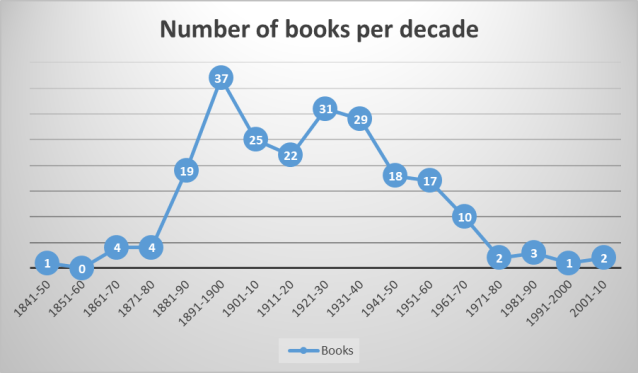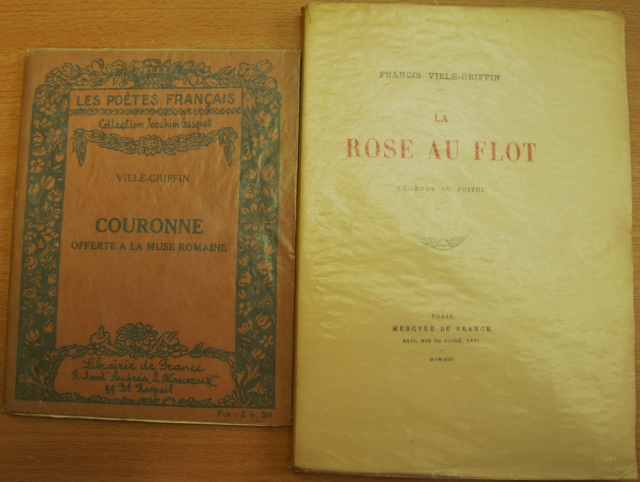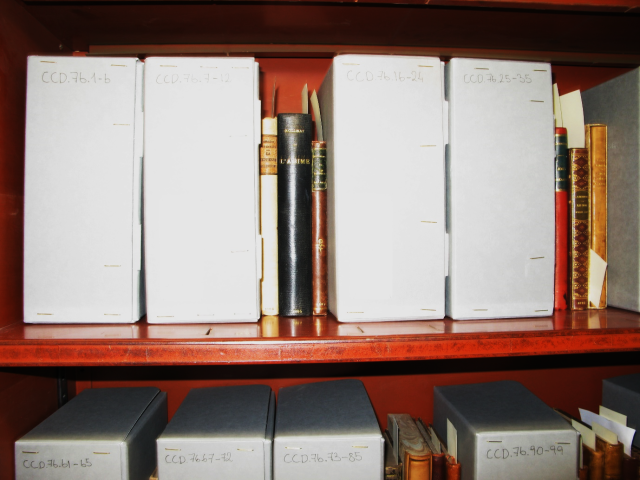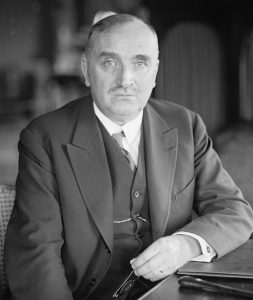The police killing of 17-year-old Nahel Merzouk on 27 June in Nanterre (in the suburbs of Paris) and civil unrest that occurred subsequently in France show how challenging it is to uphold the values of equality and fraternity, both socially and institutionally. For Bastille Day this 14th of July, we focus on the famous poem ‘Liberté’, initially entitled ‘Une seule pensée’, composed by Charles Eluard under the German occupation of France in 1941. This love poem to Nusch was turned into a celebration of and aspiration to Freedom. It is marked by the leitmotiv “J’écris ton nom”, reminding us of the power of both speech and writing. While the collaborationist Vichy régime had replaced the French revolutionary motto from “Liberté, Egalité, Fraternité” to the conservative “Travail, Famille, Patrie”, the poem “Liberté” became emblematic of French resilience throughout the Second World War and beyond. This blogpost gives an overview of the early publications of the poem: many of which are available at Cambridge University Library, including special editions with the Eluard’s signature and dedications, within the Chadwyck-Healey Liberation collection.
Tag: French poetry
The Martin Stone collection of French poetry. Part 2: More than a century of French poetry
In order to give a better view of the collection’s distribution in time, here are the numbers of books per decade:

Most of the collection was published between 1881 and 1970. We can see two peaks: the last decade of the 19th century and the interwar period. These were the core times of two important poetic movements, respectively symbolism and surrealism.
Here are a few topics which can be explored using books from the Martin Stone collection.

Continue reading “The Martin Stone collection of French poetry. Part 2: More than a century of French poetry”
The Martin Stone collection of French poetry. Part 1: A collection of appeal to the bibliophiles
The Martin Stone collection of French poetry
Martin Stone was an English guitarist and rare books collector who had a strong interest in French poetry. Cambridge University Library bought his French poetry collection this year through the bookseller Justin Croft after Stone’s death in 2012.
This collection of French poetry contains 225 books.[1] The oldest one is Odes et ballades by Victor Hugo, published in 1841, the most recent is Sept, written by Andrée Chedid and illustrated by Erik Bersou, published in 2009. Martin Stone focused on purchasing illustrated books, first editions and rare works by authors now long forgotten.
In the past three months, while cataloguing these books, I wanted to showcase the features of these books which appeal to a bibliophile clientele. I will now describe here these characteristics with some examples from this collection.

The Martin Stone collection of French illustrated poetry, 19th-20th centuries at Cambridge
Cambridge University Library has just acquired a collection of about 230 French illustrated poetry books ranging from 1841 to 1970 and beyond. They were collected by Martin Stone, an English guitarist as well as rare books dealer and collector who passed away in 2016. The collection consists mainly of outstanding first editions, many of which printed on special paper and containing signatures and dedications by and to prominent figures of the Parisian art world (Cocteau, Apollinaire, Marie Laurencin etc.). It is very strong from a literary perspective, with major or lesser-known French and Belgian poets, ranging from Symbolist and Decadent writing to the 20th century Modernist avant-gardes, which reverberated across the globe.

Paul Claudel and Audrey Parr : exhibition in the UL Entrance Hall
Originally posted on the Library’s Special Collection blog:
To mark the 150th anniversary of the birth of the poet and playwright Paul Claudel (1868–1955), a new exhibition in the Library’s Entrance Hall displays highlights from a collection of letters, postcards, verses and books sent or presented by Claudel to his friend and collaborator Audrey Parr (1892–1940), and donated to the University Library in 2001 by Parr’s granddaughter, Mrs L. M. Jack.
Claudel, who served in the French diplomatic corps, met Audrey, who was married to the British diplomat Raymond Parr, in Rome in 1915–16. The friendship deepened when both Raymond Parr and Claudel were appointed to Rio de Janeiro shortly afterwards. She and Claudel met intermittently thereafter, but pursued their relationship by letter. After the Parrs’ separation in 1930 Audrey settled in London, and remarried in 1938. She died in a road accident in May 1940.
Claudel’s letters and poems to Parr frequently show a whimsical, almost flirtatious, side to his character; he often signed with his pet name ‘Cacique’, and hoped that she might follow him around the globe. But beneath the light-hearted banter, the correspondence demonstrates the strength of an enduring friendship based on mutual passion for literature and the arts. The exhibition opens with the earliest surviving letter from Claudel to Parr, MS Add.9591/1, written during a mission to Washington in January 1919 (where, aptly for a French diplomat, he stayed at the Hotel LaFayette, whose letterhead he used). He told of his protracted journey to the United States via Martinique and Puerto Rico, and gave his impressions of New York. Claudel concluded the letter by recalling a walk he had taken with Parr by the Atlantic in Brazil, ‘while the big waves were breaking on the rocks’, during which she had confided ‘all her troubles’.
The two main printed items in on display both show the influence on Claudel of his diplomatic postings to the Far East, firstly to China in the 1890s and later to Japan in the 1920s. The prose poems in Connaissance de l’est were written in China and first published by Mercure de France in Paris in 1900. An enlarged edition appeared in 1907, and the work was reissued in China in 1914 as part of the ‘Collection Coréenne’ under the direction of the ethnographer, archaeologist and writer Victor Segalen (1878–1919). This edition was printed and sewn in oriental fashion, and its two volumes were housed in a fabric-covered wrapper. The Library’s copy, CCA.45.1, presented to Audrey Parr, is number 585 of 630 numbered copies.
In 1926–7, towards the end of a posting to Tokyo, Claudel wrote a number of short poems inspired by haiku, published as Hyakusencho = Cent phrases pour éventails (Tokyo: Koshiba, 1927). This edition of a hundred ‘phrases for fans’ was lithographed from versions which Claudel produced using a brush; the calligraphy of the accompanying Japanese characters, chosen as titles for their decorative and suggestive qualities, was the work of Ikuma Arishima (1882–1974). Three orihons, each consisting of numerous sheets of paper pasted together into a single length and folded in the style of a concertina, were housed in a chitsu, or wrap-around covering—a format already antiquated by the 1920s. The copy shown in the exhibition, CCA.45.3, was inscribed by Claudel for Parr in Washington in 1930, ‘in memory of the beautiful fans of Brazil’.
The exhibition pays particular attention to Parr’s role as a collaborator on Claudel’s creative projects. In Rio, she collaborated with Claudel and his secretary, the composer Darius Milhaud, in a ballet, ‘L’Homme et son désir’, for which she provided set designs. Milhaud later described how they cut fifteen-centimetre figures from coloured paper to work out the movements of the ballet. Claudel inscribed Parr’s copy of his play L’annonce faite à Marie, CCA.45.12, with a dedication to ‘my kind collaborator’.
Following ‘L’Homme et son désir’, Parr next collaborated with Claudel by producing illustrations for his poem Sainte Geneviève, published in Tokyo in 1923. Two years later, Claudel wrote Le vieillard sur le mont Omi, a set of prose poems, and asked Parr to illustrate the sequence; sheets from Claudel’s manuscript of the text, sent to Parr, with a page bearing a dedication, are included in the exhibition (MS Add.9591/188, ff. 1 and 3–4). It was decided that the artwork should take the form of paintings of butterflies. Several times in letters written between 1925 and 1927 Claudel expressed anxiety over delays to the printing of Le vieillard sur le mont Omi, and with increasing concern he asked after progress with Parr’s illustrations. In a letter from Tokyo of 6 January 1927 included in the exhibition, MS Add.9591/55, he underlined the question ‘And our butterflies, Margotine?’: Claudel feared they had flown away, taking the book with them.
In due course, however, the de luxe edition of Le vieillard sur le mont Omi was produced in Paris by Le Livre, illustrated with 30 gouaches by the illuminator and printmaker Jean Saudé after designs by Parr. Her original butterfly paintings, two of which are on display (MS Add.9591/188), were executed on a semi-transparent hot-pressed paper which allowed pigment on either side of the page to be visible: the edition had the subtitle ‘Papillons et ombres de papillons’ (‘Butterflies and shadows of butterflies’). Mrs Jack’s donation included a set of proofs, MS Add.9591/155, some folded as quires or bifolia, some with printed slips pasted on, and some with manuscript emendations. The butterflies were to be Parr’s last collaboration with Claudel, but their correspondence continued until just a few months before her death.
‘Paul Claudel and Audrey Parr: a friendship in books and letters’ runs in the Entrance Hall until 22 August, and can be visited during normal Library opening hours.
John Wells
Department of Archives and Modern Manuscripts
Continue reading “Paul Claudel and Audrey Parr : exhibition in the UL Entrance Hall”





